Blooming almond bush, landing and care for whom does not create trouble, always attracts enthusiastic views. In the spring, when the sun's rays begin to warm up even the most secret corners of the garden, almonds dressed in rich pink decorations. For three weeks, while almond flowers blooms, the garden is transformed, and its air is filled with an incredible suggest aroma.
Book Almond Botanical Description
- The almond plant belongs to the pink family.
- There is information that almonds come from the Mediterranean. Nowadays, in the wild culture, he is found in Moravia, California, China. In culture is grown almost everywhere.
- Different species can develop as a shrub or tree trim stam. At almond bush height of 3 m. If the plant grows in the form of trees, it reaches the height of 7 m.
- Rhizome almonds are well formed, consists of 3-5 skeletal roots deep into the soil germinating. Through this tree extracts moisture from the ground, even in the long-term drought.
- Looks like an almond bush? The leaves of the almond leathery, lanceolate. After proper trimming spherical crown shape. Greens blossom begins at step completed flowering. Shoots of two types: short and degenerative rather long vegetative.
- Blossoms almond bush: Five-petalled flowers, simple or double, to 2.5 cm in diameter, their color - from white to pale pink. Flowering begins in the 4th year after planting. Flowers bloom in March and bloom for about three weeks.
- Fruit - round pericarp with bone. In ornamental almond the fruit inedible, while the ordinary - not only edible, but also useful.
- Almonds - a beautiful flower spike. He is not demanding growing conditions, without the painstaking care home to more than a hundred years. Kind extremely drought resistant.
The shape of the above-ground parts are two types of almond - tree or shrub that is determined by the plant species. The bushes are decorative view of almonds grown to decorate the landscape design, it bears fruit inedible fruits, but has high resistance to frost. Wood (This almonds vulgare) are grown to produce the crop.
Almond varieties
In nature, almonds represented by several species, and culture - dozens of varieties.
almonds ordinary
This species is of horticultural crops. There are sweet almonds, it is edible. Has many varieties are grown in horticulture. Different decorative effect, while able to produce fruit up to 80 years. There are and wild species - the bitter almond, which is a poisonous plant.
almonds bobovnik
Compact shrub up to 50 cm. It has a dense spherical crown of erect shoots, hidden gray-red bark.
The leaves are narrow, much elongated, on top of rich green, the bottom - a pale green. Flowers small bright pink color. Flowering plentiful, but short - up to 10 days. The fruits do not differ excellent taste, but quite edible. It has two subspecies: belotsvetkovy and Gessler.
Belotsvetkovy almonds modest size, flowering 10-14 days with simple white flowers of medium size.
Almonds Gessler - bush very modest size (not exceeding 100 cm), a bright pink flowers are collected in inflorescence. The subspecies is known for the wealth of varieties:
- White sail - shrub with tiny white flowers (7-10 mm in diameter), which are densely covered shoots.
- Dream - inflorescence double, pale pink color.
- Pink Flamingos - Terry buds, small, milky-pink color.
- Mediator - shrub up to 2 m in height, flowers pale pink buds.
almonds Georgian
Bush is a Caucasian endemic. He is undersized - about 1 m in height. Exterior features pretend like almonds low, but its leaves are longer - about 9 cm buds are dark pink, large, bristly..
This type of active use selectors with a view to breeding varieties of almond with increased frost properties.
Ledebour almonds
View more than fills the expanse of the foothills of the Altai. The foliage is dark green, elongated. Flowering shrub in early March. Inflorescence, consisting of pink flowers, blooming delight exactly 20 days.
In the culture of popular hybrid Fire Hill, whose eye-catching red and pink flowers up to 3 cm in diameter.
almonds Petunnikoff
The natural environment of species is found only in Central Asia. Low bush (100 cm), a crown formed erect or slightly splayed threads coated with a gray-brown bark.
Young shoots differ pale yellow color. Leaves linear, pointed at the top segment, with serrated edge. The flowers are pale pink color, always arranged singly.
Prunus triloba
This bush has a decorative almond comely spreading crown, which easily grows to a height of 3 m.
Leaves lobed, underside fleecy with coarsely edge. Coating buds different, small flowers are arranged in pairs.
There are two subspecies:
- Captivity - bush with double pink buds of a fairly large size - up to 4 centimeters. Singularity of the form - before the opening of leaves budding, which somewhat reduces its decorative effect.
- Kiev - grows up to 350 cm in height, blooms magnificently double flowers of scarlet color. Blossoming flower size of 35 mm in diameter. Greens dissolved after flowering. The subspecies has many varieties with all kinds of size and color of the buds:
- Svetlana - flowering variety with pale pink flowers;
- Tanya - gustomahrovye buds curled petals pink;
- Snow Uimury - terry flowers, their color changes from pale pink to cream depending on the phase of flowering;
- Memory of Mahmeta is an interesting grade with cream-pink buds.
Almond bush landing
The planting of almond seedlings is carried out at a certain time with the preliminary preparation of the plot and the creation of suitable conditions. Only subject to the strict implementation of all rules, the plant is successfully rooted.
When put almonds
Site work can be carried out early spring, with the arrival of March, or in the last decade of November. The place is chosen solar, in the southern part of the plot, without drafts and strong gusts of the wind.
Advice! Experienced gardeners are recommended to plant almonds in autumn. The bush planted at this time, rather than in the spring.
What kind of soil prefers almonds
For almonds, breathable soaps are picking. It can be black soil, loam, sandstones with pH 5-7.7 and increased lime content.
It is categorically not suitable soil, in which groundwater, as well as sour, clay and saline soil. In such an environment, almonds immediately die.
How is the almond landing
Before boarding almonds prepare the site:
- For 2-3 weeks before the landing, a hole is digging a depth of 40-60 cm and a diameter of 55-70 cm.
- If there are several seedlings to plant, there are no less than three meters between the pits in each row and 6 m between the rows.
- At the bottom of the pit lay out the drainage layer - a broken brick, a large crushed stone.
- The soil in the pit is mixed with a nutrient mixture of three parts of the leaf land, two parts of the sand and part of humus. Additionally make a bucket of manure and 0.5 kg of superphosphate.
- If the soil is too acidic, add 0.35 kg of lime.
- Then the pit is left for 2-3 weeks so that the soil is asslaved, and then planting seedlings.
How to plant almonds:
- The landing is carried out either early in the morning or in the afternoon.
- The center of the prepared pit is fixed by a semi-meter pole.
- In the middle of the pit build a slide from the ground.
- From clay make a boltushka, which will be slightly sour cream, dip the roots of the seedling in it.
- Rhizome bushes are distributed on the side, leaving the root neck above the soil level.
- They fall asleep the roots of fertile soil, it is slightly compacted and plenty of seedlings, spending 15 liters per pit.
- When the water goes into the soil, bushes are tied to the sixth, mulch the rolling circle peat.
Kush Almonds, Care
The almond bush is easy to care, so difficulties in the process of its cultivation arise rarely. Consider how to water him and fertilize so that the bush does not hurt.
Watering almonds
- Gorgeous almond blossom provides regular irrigation. The plant growing in the sandy soil needs more frequent watering than almonds planted in Suglinka. But it is not necessary to get involved in abundant irrigation so that the rhizer does not rot.
- How to understand that it's time for watering: when the soil is a 2 cm inland, under the bush it is necessary to pour the bucket of the outstanding water.
- Young seedlings watered more often, regardless of the degree of soil. Do it every 10 days.
- If there is no possibility of frequent irrigation of almonds, the plant must be watered at least twice in the season.
- In March, when irrigated after winter, the soil is carried out. Then, during the growing season, 3-5 looshes are carried out, and also support the purity of the soil, getting rid of weeds.
Almond Bush, feeding
- The bush is necessarily fertile, otherwise it ceases to bloom.
- In May, a lot of nitrogen is required, so ammonia nitrate is made.
- In the autumn, at the time of the jumping of the priority circle, overwhelmed dung, as well as sulfur potassium.
- Between the rows of almond bushes often grow sedients to enrich the soil with nitrogen and minerals.
Treatment of almonds
All types of almonds are exposed to active insumage of pests and are often sick, so care for this culture provides regular preventive treatment.
For this early spring, the rolling circle and cracks in the cortex are treated with burgundy fluid. It destroys insects. And in the leaffall, the almond bushes are re-treated to prevent the development of pests in the cortex during the wintering process.
Zimovka almonds
In the middle lane, most almond varieties winters only with shelter. Only steppe almond varieties are able to survive the harsh winter. This kind of frost-resistant, quickly multiplies, grows in any soil, fruits edible fruits.
In the suburbs, almond grows without problems. Wamble without shelter, and if it is frozen, it is rapidly restored after trimming. But gardeners do not want to risk, and shelted Garden Almond Loutrasil. Also, to protect the bush in August, pruning the topless shoots to accelerate the decoration, which removes almonds from freezing.
How to form hedgehogs
- Bushes are subject to regular trimming. It allows you to maintain the decorativeness of the bush, stimulates its growth and bloom, warns the freezing of seedlings.
- Sanitary trimming is done until the moment of the coating, early spring. Remove damaged, frozen and dried twigs.
- And in the fall, the decorative trimming is already carried out to give the bush the desired form.
- Soothes that hinder the development of new twigs are pinching three times over the summer.
- The remaining branches begin to shorten when they stretch to 55 cm long. Do it no later than June.
- An adult bush is cut to maintain the decorativeness of the formed crown.
Almond bush, reproduction
The almond bush can be grown from seeds, but it takes for many years, therefore the method does not use popularity. Preference is given to the breeding of the eyepiece, if the almonds are usually growing in order to harvest. Decorative species often multiply with gag.
Growing almonds from seeds
The seed reproduction method is used to grow a bond. To grow a tough almond bush, you need to buy a good seed material in a proven flower shop. Overdue or incorrectly stored seeds will not go.
- To begin with, the seeds are stratified - on 120 days placed in the vegetable compartment of the refrigerator.
- Then spring or already under the winter, the seeds are sown in an open ground.
- At the prepared area, the grooves are made by a depth of 7-9 cm, while maintaining a distance of 45 cm between them or more.
- Seeds are immersed in a groove with an interval of 10 cm and sprinkled with fertile soil.
- Shoot will germinate next season, in April. They must be water and constantly pour.
- When bushes stretch up to 60 cm in height, all side branches are cut with a ring using a secaterator.
- When the diameter of the root neck exceeds 10 mm, seedlings can be reset.
Grafting almond
Much more effectively multiply almond by the method of eyepling, especially when it comes to fruit species. For vaccination, either storms of almonds grown from seeds or a plums or a terns are used.
- The vaccination process takes place in April. 48 hours before the grafting of diving are very watered, then the bore easily departs from the wood.
- With a direct escape on which there are full-grained kidneys, leave the leaves, leaving centimeter stiffs.
- It is covered with a bark near the root neck, and a shield with a kidney is cut off from the lead so that it fit into an incision.
- Next, the shield is inserted into the incision, pressed it with a crust and fix the plaster.
- After moving the pet, if the eye is green, the plaster is cleaned.
Almond Cluster, Vegetative Reproduction
Brush almonds after trimming actively acquiring a pig horse. Next season, offspring. The process takes place on the same principle as the usual planting of seedlings.
You can also get a new bush with a tank:
- Flexible escape is flexible to the ground, fix the metal bracket and cheer.
- The rooting process is long.
- The gangs are often poured, the soil loose, do not forget about the weeding.
- After a year or two, the glasses are hesitated.
Diseases and pests almonds
- The bush is often striking leaflets and troubles. Chlorofos and solution of economic soap will help to get rid of them.
- To destroy a paustic tick, as well as the leaflers are used by Aktellik and Calypso.
- For the treatment and prevention of sulfur, almonds are treated soon.
The correct care of the almond bush eliminates the development of diseases, helps to avoid the invasion of pests, helps the plant to bloom abundantly and withstand winter frosts. Therefore, if you want to enjoy the beauty of the almond for many years, do not neglect the simple rules of growing this wonderful shrub.

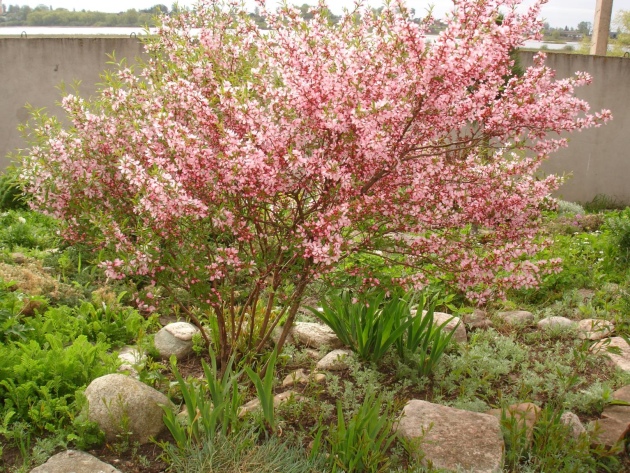
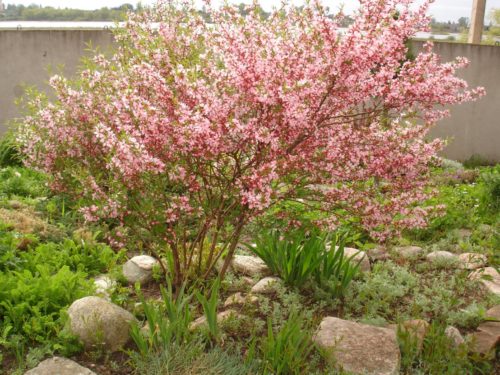
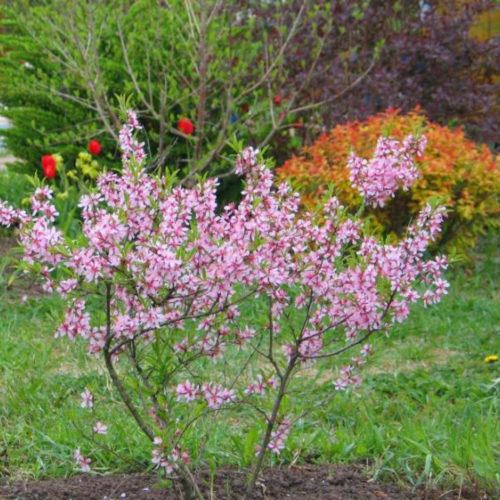
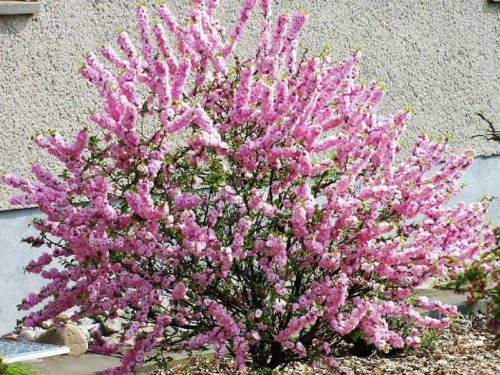
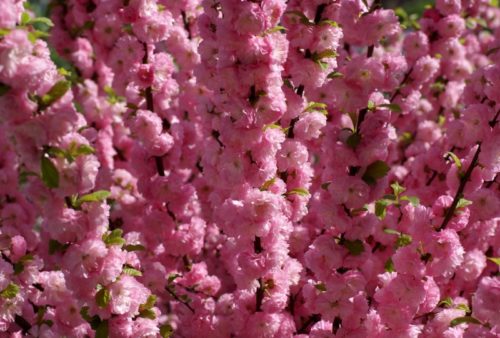
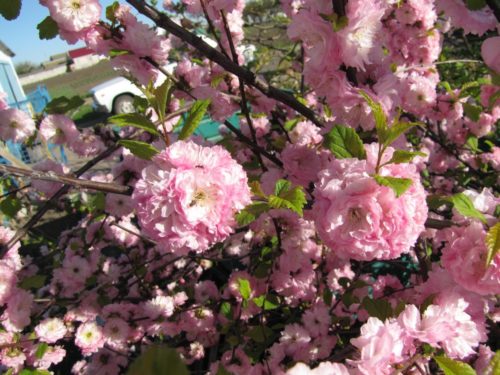
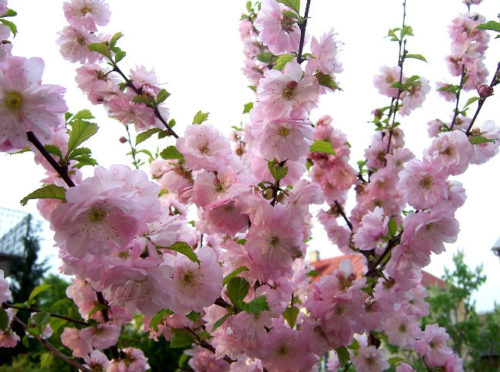
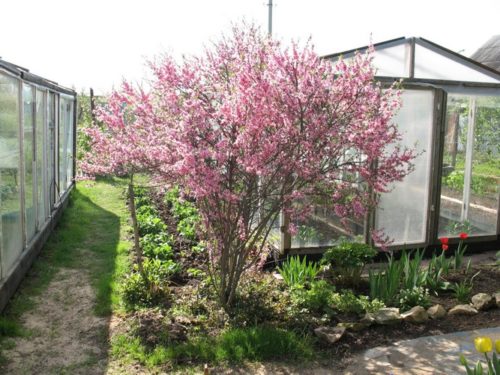
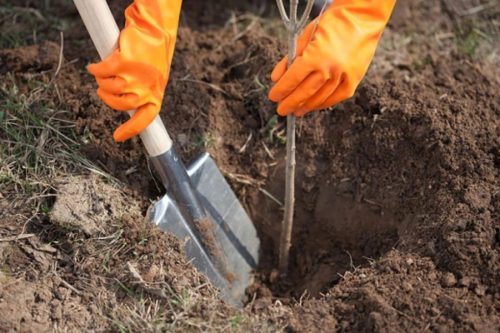
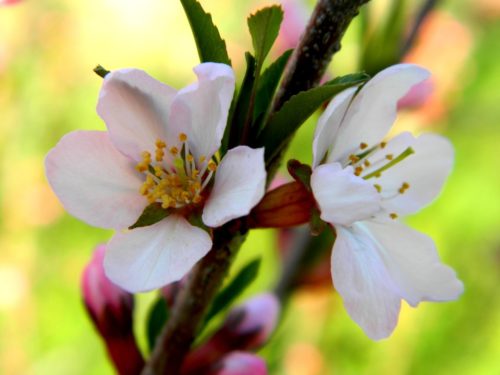

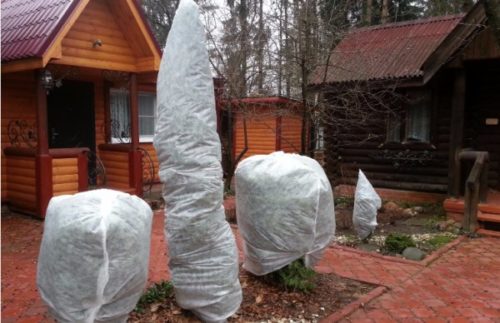
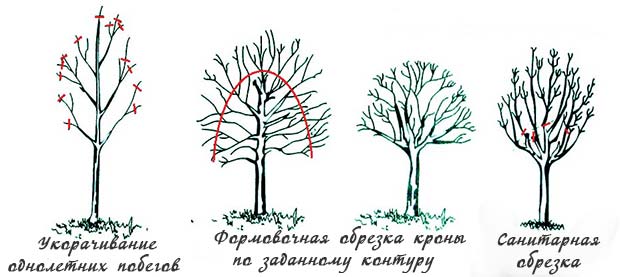
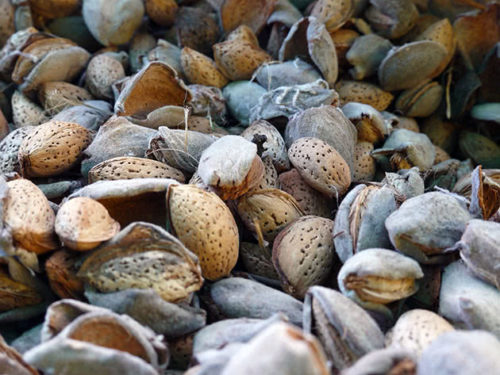
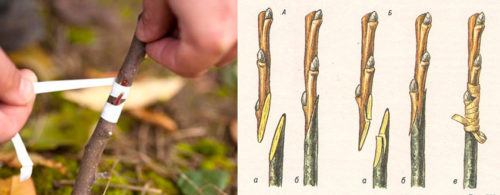

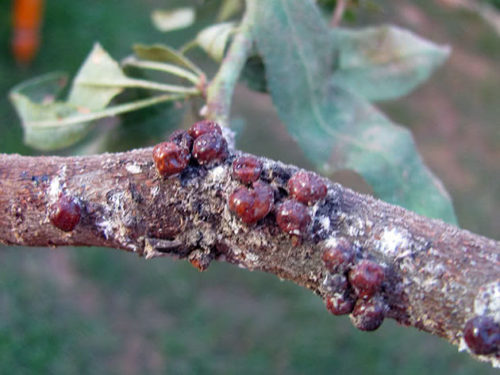
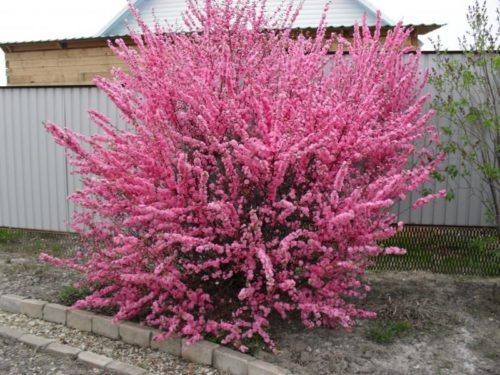
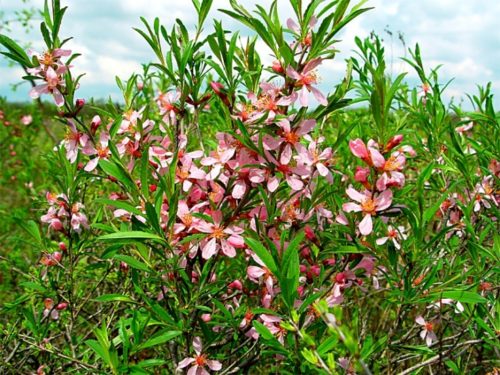
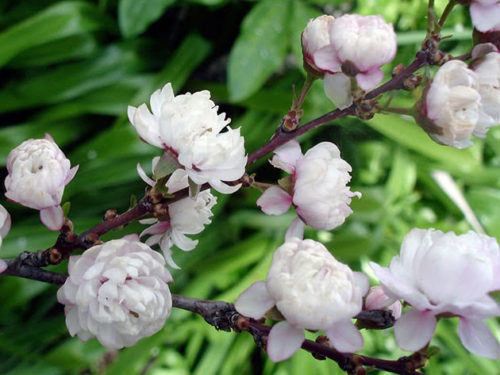
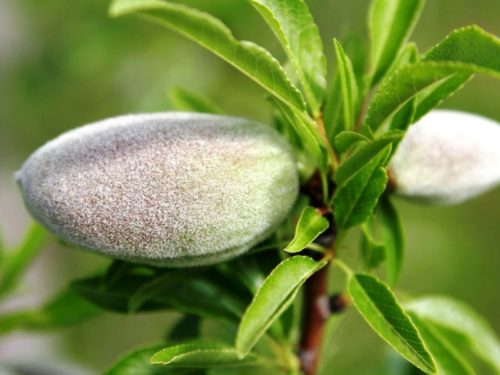












 Start a discussion ...
Start a discussion ...